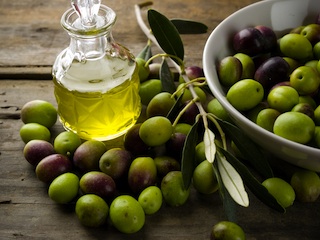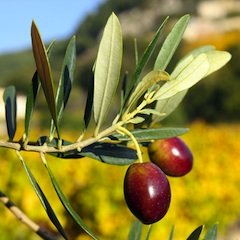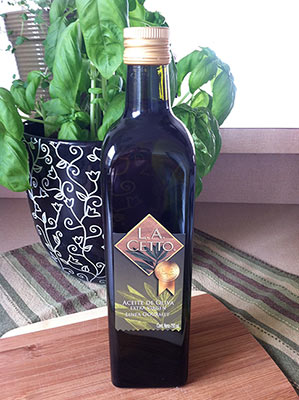Olive Oil Production Around The World

An increasing number of regions around the world are adding the cultivation of olive trees and, ultimately, the production of olive oils to their economical base. Substantially, all wine producing countries have ideal climates and soil conditions for growing olive trees, i.e., hot summers and mild winters. Traditionally, olive tree cultivation and olive oil production having been located in countries surrounding the Mediterranean Sea and Middle Eastern countries, it now has spread over the globe. More and more recipes are calling for the use of olive oil, not only due its great taste but also as a result of its many health benefits, as shown by multiple research studies.
The Birthplace – Greece
History tells us that the olive trees are going back to about 3500 BC and, as the saying goes, the rest is history. Crete is considered to be the first place where olive trees were grown. Over centuries the olive fruit itself as well as the tree, have played a large part in Greek mythology and the country’s history, with the olive branch being given to winners at Olympic Games as shown in ancient paintings. The olive and its oil has remained a staple of Greek ‘cuisine’. Though Italy and Spain have surpassed Greece in producing olive oils, its place in history remains as ‘the place of origin’.
Italy
Beside Spain, Italy is one of the largest olive oil producers worldwide. There are alone twenty regions, including the islands of Sardinia and Sicily, where orchards are being cultivated, with the Tuscany region the best known. Open any Italian cookbook and as good as each recipe asks for the inclusion of olive oil.
Spain and Portugal
Spain is also being known as one the world’s foremost producers of olive oil. The variety of types – extra virgin, oils named after regions, infused oils – is extensive. Portugal, while the smaller country of the two, is equally successful in its growing operations and production of olive oil. Volume is heavily directed towards export.
France
Most of France’s olive oils are coming from Provence and Languedoc districts and there are a number of well known brands on the market. While its production is relatively small by world standards, France is very proud of the quality and distinctive taste of its products.
North America
In the US, California heads the states producing olive oils, cultivating 250 different types of olives alone, ranging from very small growers to large scale orchards. Florida, Oregon and Texas have also entered the market with much smaller operations.
South America
Here too, two countries famous for their wines, are branching out into the cultivation of olive trees and the production of olive oil; Argentina and Chile. Both countries are not only targeting their local markets but also looking to export their produce.
Peru’s relatively small production is targeted mostly for the export market.
Colombia: The last few
years have seen fast development in its olive oil industry with its
production of extra virgin oil. There has been low consumption of
olive oil due the high prices charged locally. However, production
levels have been steadily increasing in the hope of not only lowering
prices but also reducing the dependence on imported olive oil.
Australia and New Zealand
Both countries are well known for their wines; however, over the recent years olive orchards have started to spring up. These are small operations and are not playing, as yet, a major part in their respective markets. Operations are usually considered ‘boutique producers’ and not able to cover the volume of internal consumption. Supply is heavily dependent on imports.
Turkey
Turkey is another major producer of olive oil, having a very long and rich history of growing olive trees.
Middle East
Jordan, Lebanon, Israel and Syria are countries to watch during the coming years. They are actively increasing olive growing operations and production of olive oils, with emphasis in exports.
North Africa
Tunisia, Morocco and Algeria are leaders of olive cultivation and production of olive oil in this area. Building on their experience of many centuries of growing olive trees and producing olive oil, they have entered the export market offering a variety of oils.
South Africa
Even though the first olive trees were planted by a farmer in 1661, active cultivation was not exploited until another 200 years had passed. Today’s orchards are relatively small and considered ‘boutique operations’. Consumption remains at a low level and efforts are under way to increase production.
Recent countries entering the market
China and India have started growing and producing operations on a small scale. Product distribution is limited to local consumption and, according to news reports, they are working hard on improving quality.
Many more new areas, such as Mexico below, are producing specialty high-end olive oils, capitalizing on the growing interest and appetite of their home and export markets for quality products.

Why is olive oil so good and yet so healthy at the same time?
We're used to having to choose between the two. For example, when we're presented with food that tastes like cardboard but we're told is full of organic, unsweetened fiber. ;-)
Well, olive oil is mostly composed of mono unsaturated
fatty acids. These acids can help lower the risk of heart disease by lowering cholesterol levels. They can
also help normalize blood clotting and be beneficial to blood sugar control (re: diabetes). Olive oil is rich as well in antioxidants and in vitamin E, which are believed to play a role in cancer prevention.
So, enjoy olive oil in its many uses, mainly culinary ... and remember that the secret is to add olive oil to other quality ingredients (e.g. tomatoes, feta, arugula, bocconcini, etc) to end up with absolutely delicious and healthy food!




New! Comments
Have your say about what you just read! Leave me a comment in the box below.